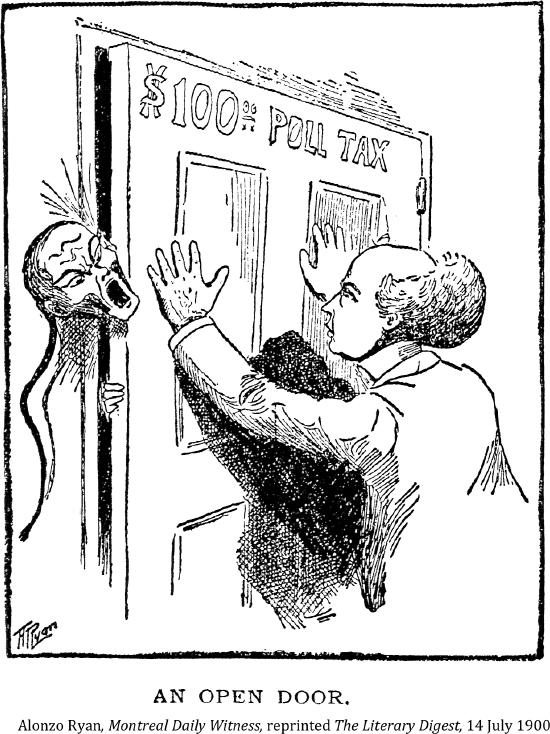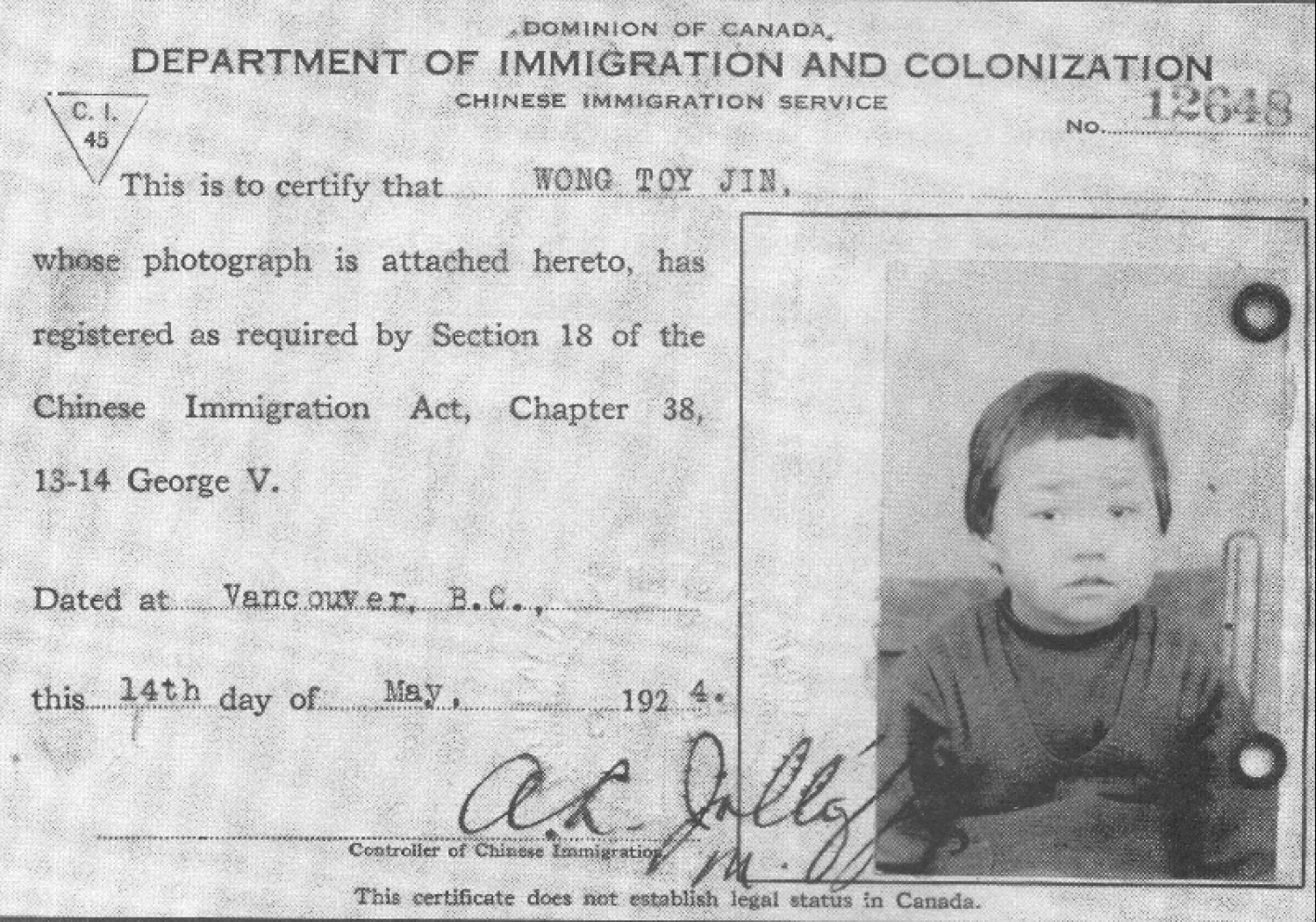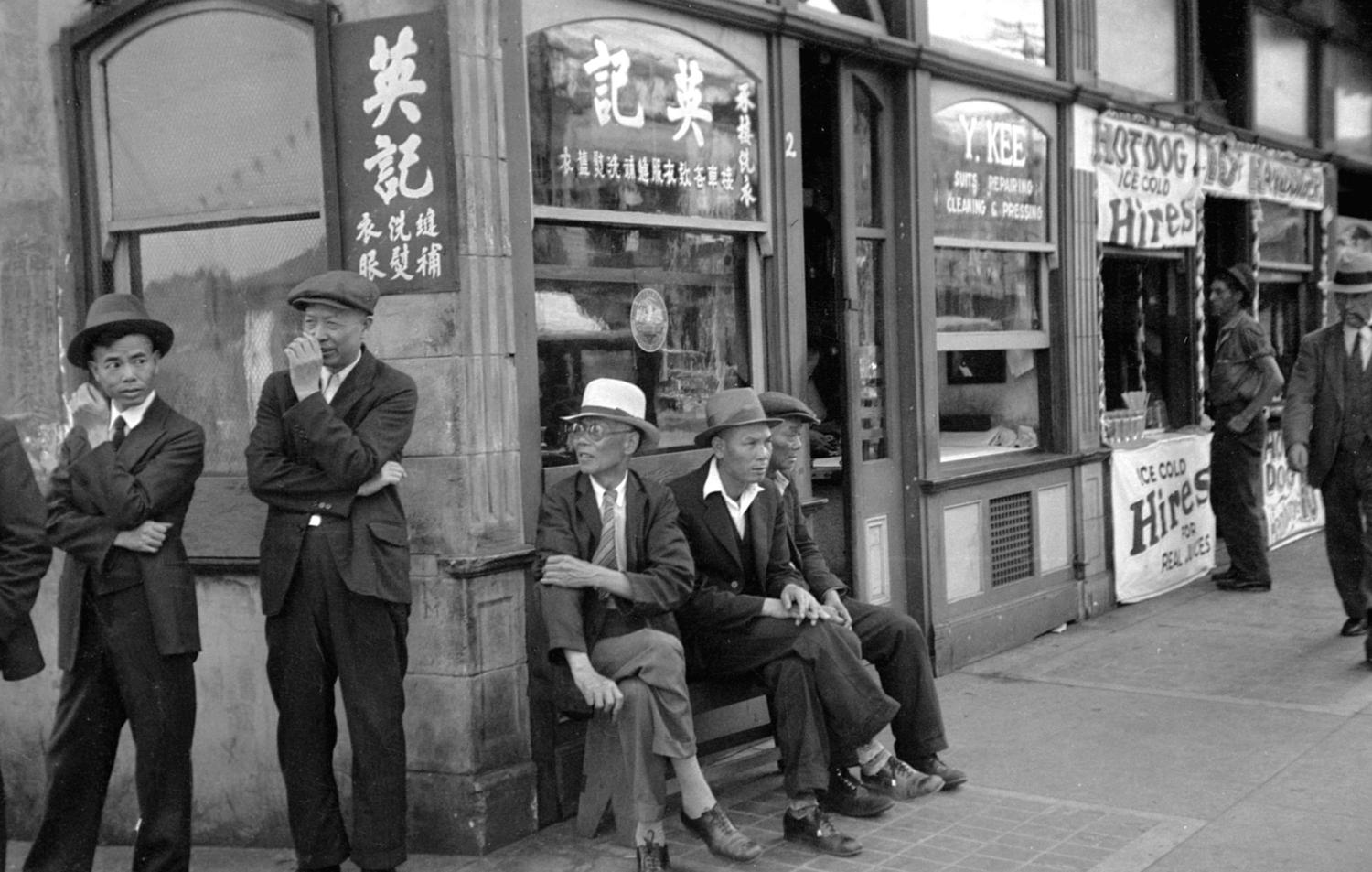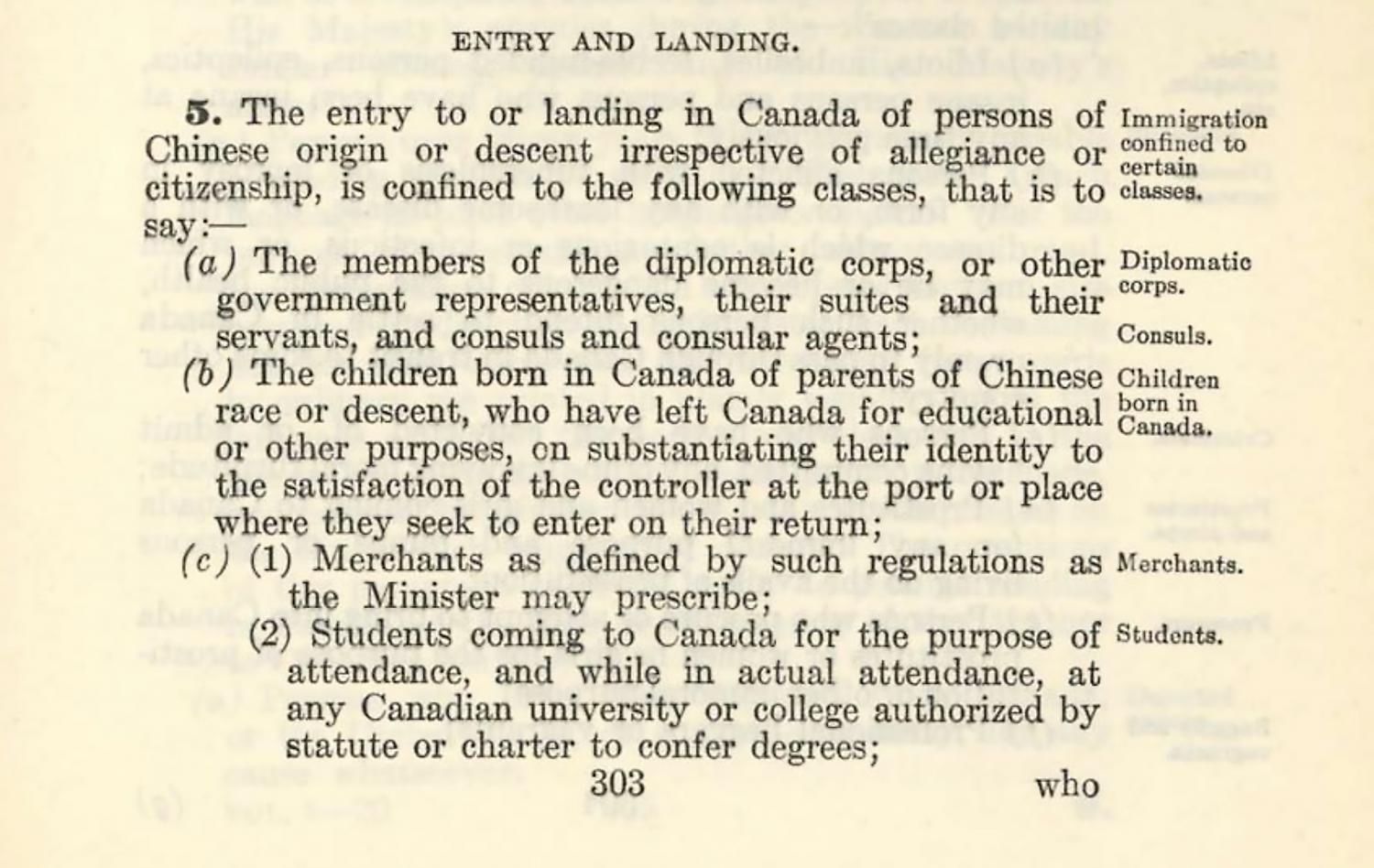'Chinese Exclusion Act'
A new rule shuts the door to Chinese immigrants
Date: 1923
Drawn like many by the allure of gold, Chinese immigrants faced prejudice as soon as they began settling in British Columbia in 1858. Discriminatory regulations and outright harassment from white prospectors prevented many from striking it rich. Over the ensuing decades, governments further entrenched anti-Chinese sentiment through numerous racist laws. Yet despite this hostility, many Chinese men still came to B.C. in hopes of a better life, or to make enough money to support their families back home.
As early as 1885, the federal government had tried to limit the flow of Chinese immigration. What started as a $50 head tax on all Chinese newcomers mushroomed to $500 by 1903. But it didn’t work. Between 1885 and 1921, Canada’s Chinese population tripled from 13,000 to nearly 40,000. Anti-Chinese racism hadn’t quelled either. So, Prime Minister William Lyon Mackenzie King scrapped the head tax in 1923 and introduced the Chinese Immigration Act, often dubbed the “Chinese Exclusion Act.” It prohibited all Chinese immigration, excluding diplomats, students, certain merchants, and Canadian-born of Chinese descent returning from overseas — but only if they hadn't been out of Canada for more than two years. The legislation passed on July 1, 1923 — a holiday most Canadians then called Dominion Day became known as “Humiliation Day” in the Chinese-Canadian community.
Though Canada had limited immigration from other non-white countries, including Japan, only Chinese immigrants were explicitly prohibited based on race. Unlike the head tax, the new rule proved exceptionally effective. Historians estimate fewer than 50 immigrants — and possibly as few as 15 — legally gained entry into the country from 1923 until the federal government repealed the law 24 years later. Some, however, made it into Canada under false identities. They became known as “paper sons.” Still, Canada’s Chinese population, which overwhelmingly resided in British Columbia, dropped by 25 per cent between 1921 and 1951.
The new law also kept families apart, cementing the Chinese-Canadian community’s status as a so-called “bachelor society.” In 1941, among nearly 30,000 Chinese men in Canada, more than 80 per cent had wives and children back home in China. Some could afford short trips back home, but they couldn’t sponsor their families to join them in Canada. “When I grew up, there was a whole generation of elders, and they were all single men,” recalls local author and architect David H.T. Wong. “I’d walk through Chinatown, and they would come pat you on the head, pull your cheeks because, [children were] just such a novelty.”
Change only came after the Second World War. During the war, Canada and China found themselves on the same team, both enemies of Imperial Japan. Public opinion of Chinese Canadians began to shift. Hundreds of young Chinese Canadians fought overseas, while at home the Chinese community raised money to support the war effort. Meanwhile, a multiracial movement developed to demand Canada repeal its anti-Asian legislation. In 1945, Canada signed the United Nations’ Charter of Human Rights, which broadly condemned laws like the “Exclusion Act.” Two years later, the law was finally repealed.
However, Chinese immigration remained strictly limited. Only spouses of Canadian citizens and their children — if they were under the age of 18 — could now come to Canada. At the time, only about eight per cent of Chinese-born residents were Canadian citizens. It would take another 20 years before Canada completely stripped race or national origin from it’s immigration regulations.
Sources:
- "1923 - Federal Government Prohibits Chinese Immigration." Legislative Assembly of British Columbia, https://www.leg.bc.ca/dyl/Pages/1923-Federal-Government-Prohibits-Chinese-Immigration.aspx. Accessed 27 Apr. 2021.
- Chan, Arlene. "Chinese Immigration Act." The Canadian Encyclopedia, 7 Mar. 2017, https://www.thecanadianencyclopedia.ca/en/article/chinese-immigration-act.
- "Chinese Immigration Act, 1923." Canadian Museum of Immigration at Pier 21, https://pier21.ca/research/immigration-history/chinese-immigration-act-1923. Accessed 27 Apr. 2021.
- "Immigration: Chinese Exclusion Act." The Chinese Experience in British Columbia: 1850-1950, https://wayback.archive-it.org/4160/20201007233648/http://www.library.ubc.ca/chineseinbc/exclusion.html.
- Lee, Jennifer. "‘Humiliation Day’: July 1 Has Added Meaning for Some Chinese-Canadians." CBC, 29 June 2017, https://www.cbc.ca/news/canada/nova-scotia/humiliation-day-chinese-canadian-head-tax-exclusion-act-july-1-1.4175025.
- Marie, Gillian. Attitudes toward Chinese Immigrants to British Columbia 1858-1885. Simon Fraser University, Oct. 1976, https://core.ac.uk/download/pdf/56367671.pdf.
- Meissner, Dirk. "Clark Apologizes for B.C.’s Historical Wrongs against Chinese Immigrants." The Globe and Mail, 15 May 2014, https://www.theglobeandmail.com/news/british-columbia/clark-apologizes-for-bcs-historical-wrongs-against-chinese-immigrants/article18693361/.





